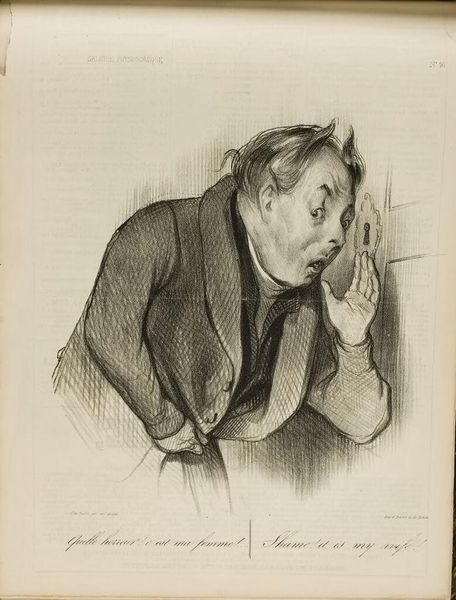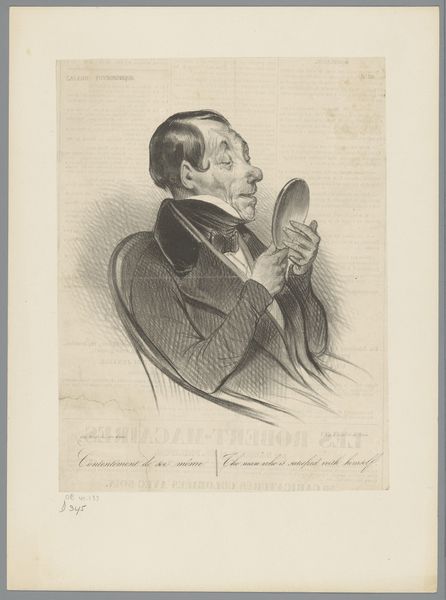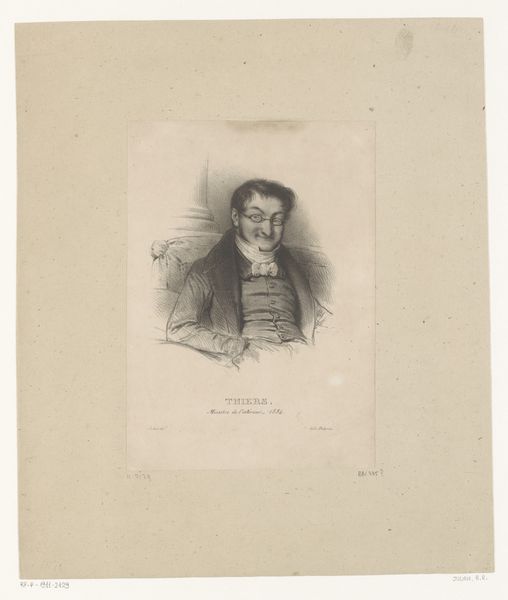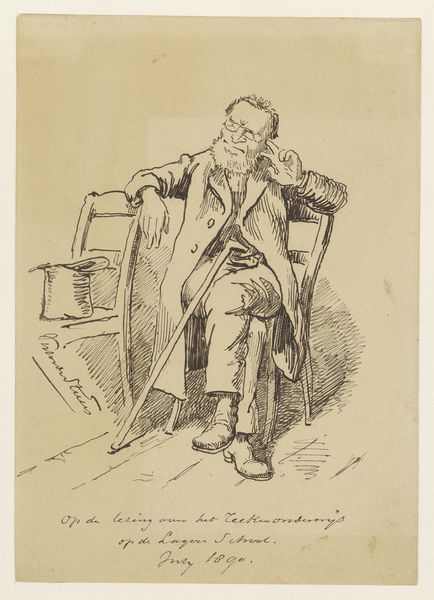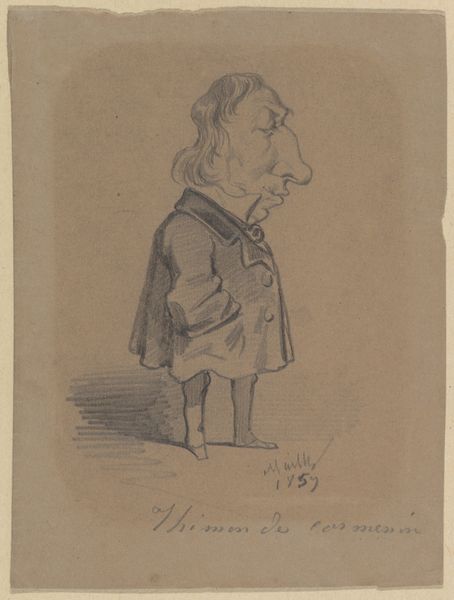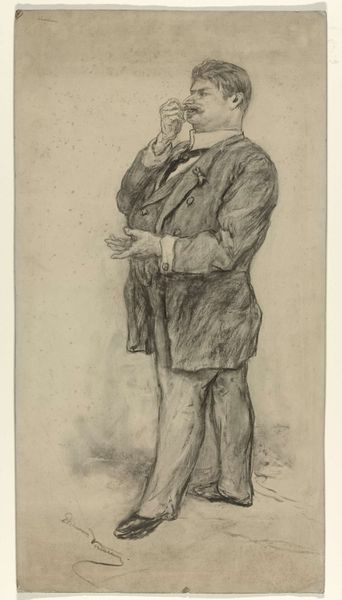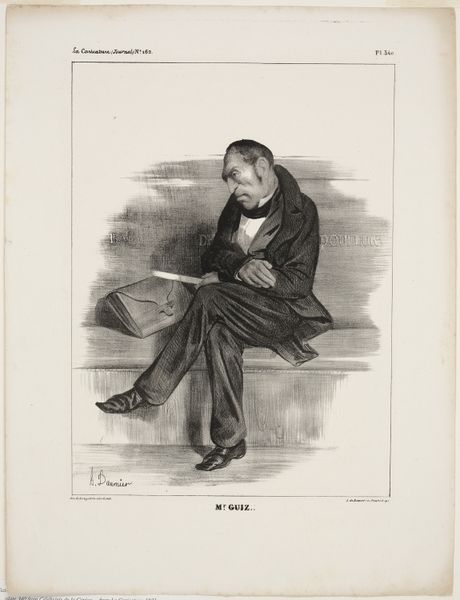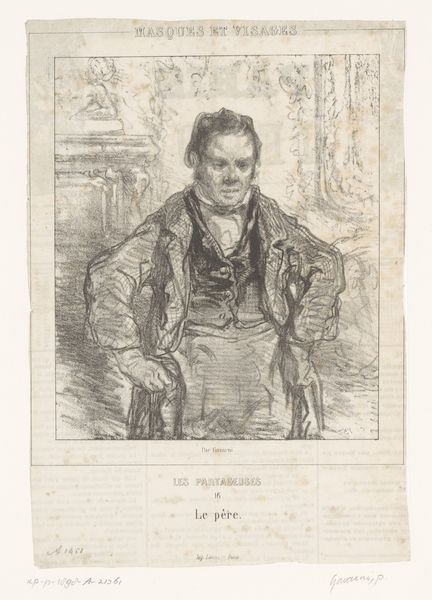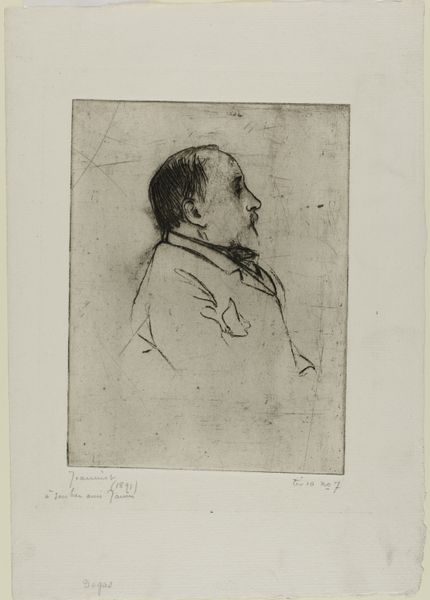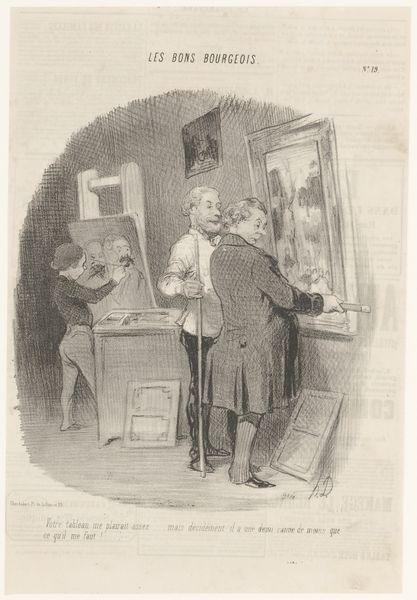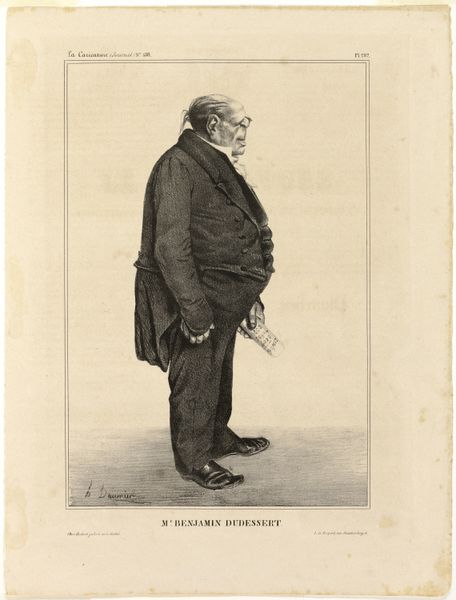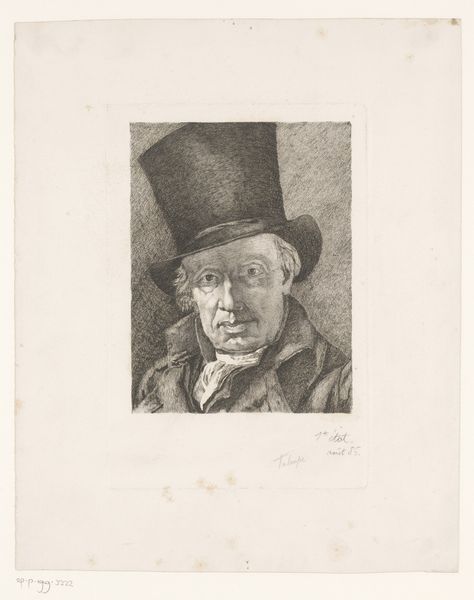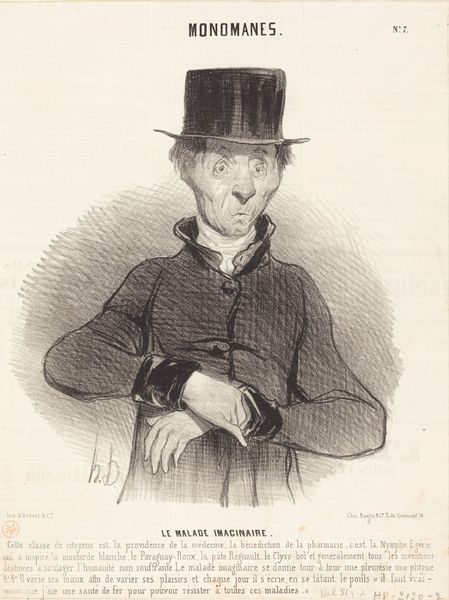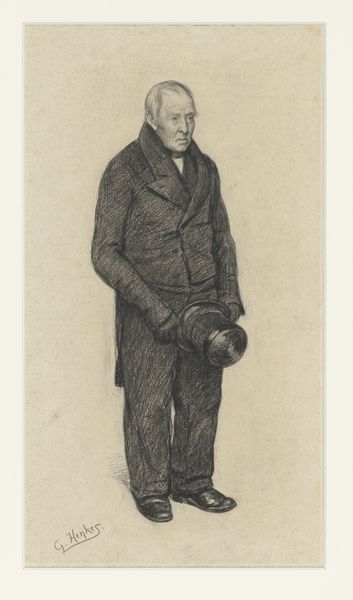
drawing, lithograph, print, pencil
#
portrait
#
drawing
#
lithograph
# print
#
caricature
#
romanticism
#
pencil
#
genre-painting
Dimensions: height 296 mm, width 233 mm
Copyright: Rijks Museum: Open Domain
Curator: Oh my, what have we here? Such scandal rendered in lithographic print. It’s Honoré Daumier’s "Man hoort bij de deur zijn vrouw aankomen", from 1837. A real peek into 19th-century Parisian… shall we say, domesticity? Editor: My goodness, it looks like a moment caught entirely off guard. All I see is desperation—maybe a bit of…comic panic? That startled face, practically plastered against the door. The lines feel so urgent, frantic even. Curator: Exactly! Daumier was the master of capturing these fleeting social observations. Remember, this was the era of the rising bourgeoisie. Prints like this weren't just art, they were social commentary, often poking fun at the foibles and hypocrisies of the middle class. It's the era of Balzac in pictorial form, with that acerbic, but knowing, eye for detail. Editor: So this fellow, eavesdropping at the keyhole…is he the subject of that gentle mockery, or do you see a shadow of pathos too? There's vulnerability there as well. I mean, nobody expects to be caught mid-peep, right? Curator: That’s where Daumier’s genius shines. He isn't simply judging, but showing us something universally recognizable about human behavior, even if, in this case, it's, questionable. Plus, consider the medium: lithography allowed for mass production, making this sort of satire incredibly accessible to the public. Editor: And I love the way the background is almost smudged and scribbled, that rough texture contrasting with the crisp detail of his face. It heightens the sense of immediacy, almost like a quick sketch snatched from life. Curator: That rapid execution was intentional, mirroring the fast-paced nature of modern life and the proliferation of images. Think of it as the 19th century's meme culture – a sharp, shareable commentary. It’s exhibited today here in the Rijksmuseum in Amsterdam as part of our larger collection of drawings and prints. Editor: So it is. Seeing the artwork now with this social lens helps see how this character—whoever he might be looking at on the other side of that door—reveals aspects about ourselves as viewers today. Curator: Precisely. The human condition never really changes, does it? Just the peepholes we use to observe it.
Comments
No comments
Be the first to comment and join the conversation on the ultimate creative platform.
